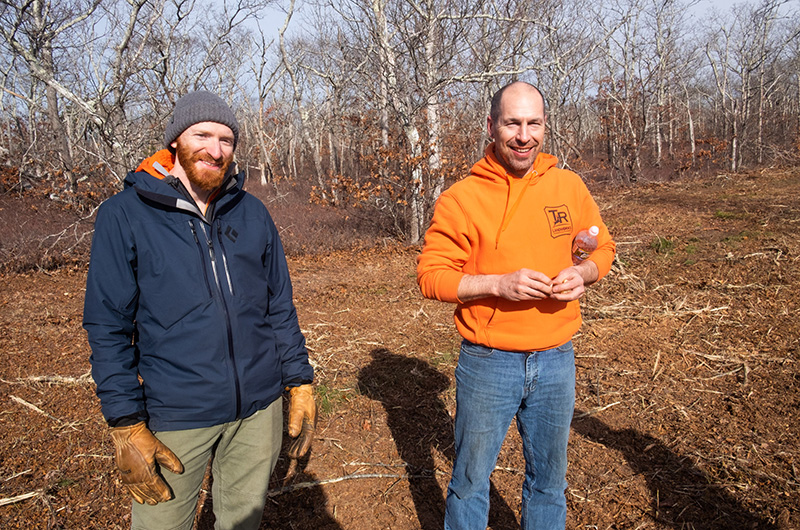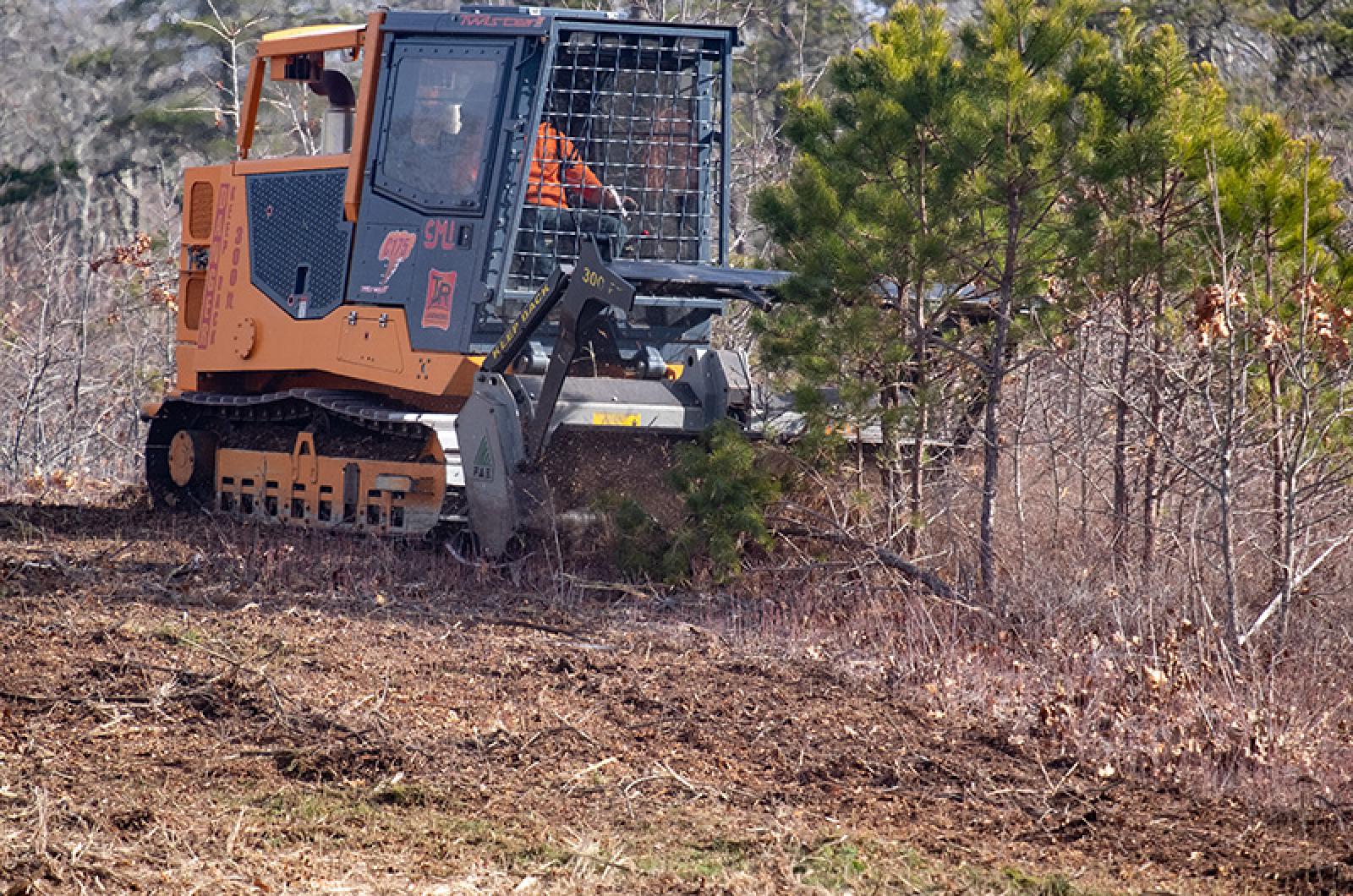The roar of machinery and crunch of crushed vegetation were in the air at Long Point Wildlife Refuge in West Tisbury this week, marking the beginning of a pair of state-funded projects to restore rare Island sandplain grasslands.
Grassland restoration efforts at Long Point and at Katama Farm in Edgartown got a boost recently from $46,000 in MassWildlife grants awarded to The Trustees of Reservations by the Massachusetts Executive Office of Environmental Affairs. Both projects will involve large-scale mowing of hedgerows where invasive shrubs and trees have taken over the rare grasslands.

“I guess it’s like mowing on steroids,” said Caleb Garone, a habitat specialist for the Trustees who is overseeing both projects. “What we’re doing is introducing disturbance via mechanical treatment, and resetting what’s here.”
Walking over mounds of freshly mowed vegetation at Long Point Tuesday morning, Mr. Garone called the area a mosaic of flat sandplain and frost bottom habitat that supports a unique collection of species, including endangered moths and butterflies. He said due to development, the land no longer sees natural disturbances from fires or storms that once kept native grasslands open.
“Because there’s only a few, we have to more actively manage these,” he said, referring to the remaining grasslands at Katama and Long Point.
The thrum of an engine grew louder and a large, orange mower appeared, chomping slowly through the 42 acres of 12-foot high hedge, leaving mounds in its wake. Stopping for a short break, driver and landscape contractor Ted D’Onofrio said the 175-horsepower machine can chew through anything.
However, it’s not quiet.
“You have to have earmuffs on,” he said. “But it’s a satisfying job.”
Mr. Garone said the mowing at Long Point will be completed by the end of the week, and then it will take about two years before the area reaches a healthy balance. “It’s not like painting a house where you slather on a coat of paint and it’s done and it looks perfect,” he said. “You have to do the initial work and let nature take over.”

He said the Trustees plan to mow again this summer to knock back any woody growth and are also working with the Woods Hole Group to experiment with using grazing goats for future maintenance.
At Katama, Mr. Garone said the Trustees are partnering with the town of Edgartown and the Nature Conservancy to remove a 2,000-foot hedgerow that rims the Farm Institute. An old composting mound will also be removed. That work is due to begin next week. He said eliminating the hedgerow will open up the 500-acre habitat — the largest unbroken sandplain on the Vineyard — and encourage bird species such as the endangered grasshopper sparrow to continue to repopulate the plains.
“We look at them as an umbrella species,” Mr. Garone said, referring to endangered populations at Long Point and Katama. “If the conditions are correct for them, that means we have the correct conditions for a lot of the species we want to see here.”
He said about 20 acres of little bluestem grass will be planted where the hedgerow is removed.
“We’re creating a space that a lot of endangered and threatened species rely on for their home and food source,” he said. “A bunch of new growth will come out of this and look great.”






Comments (1)
Comments
Comment policy »